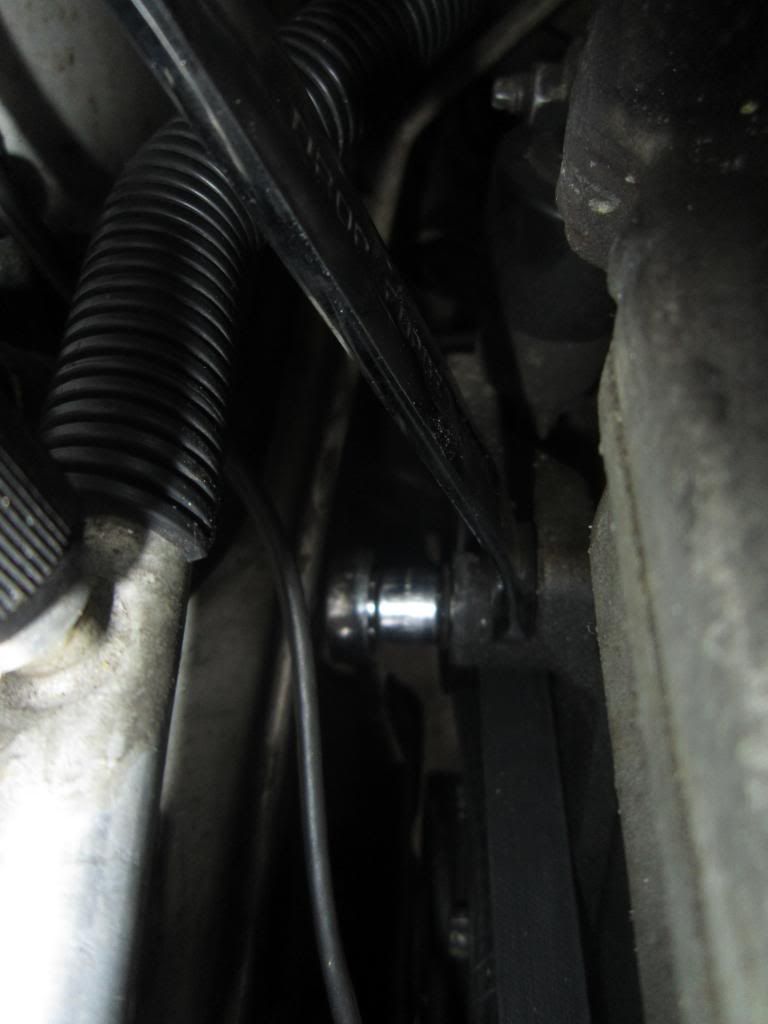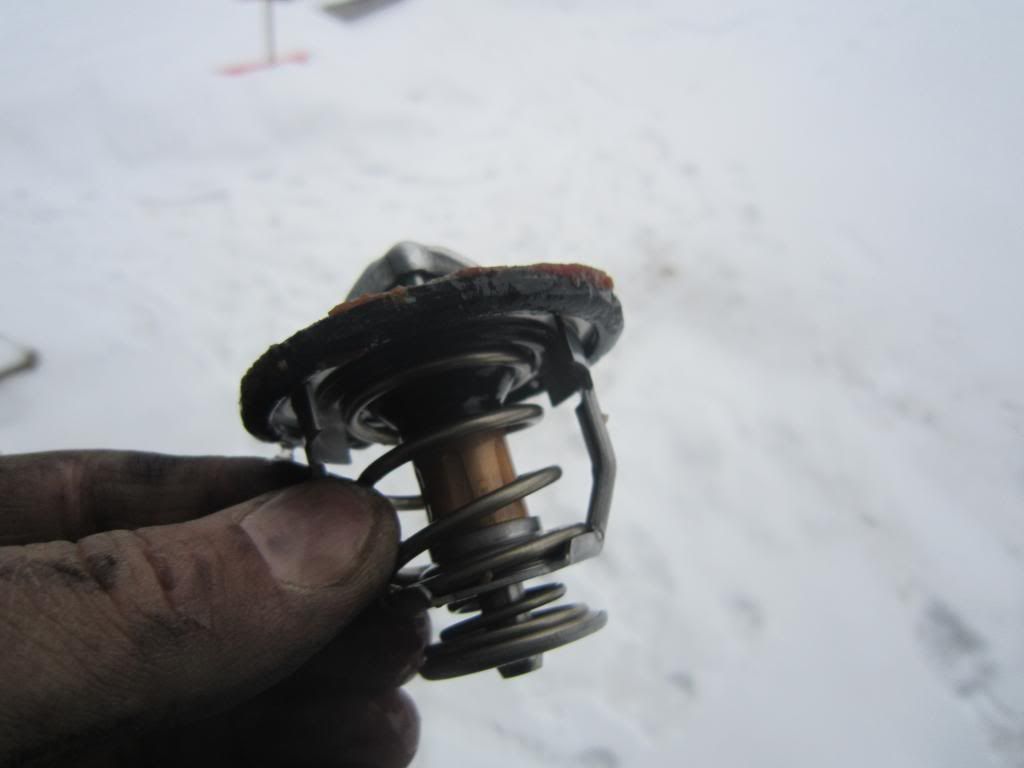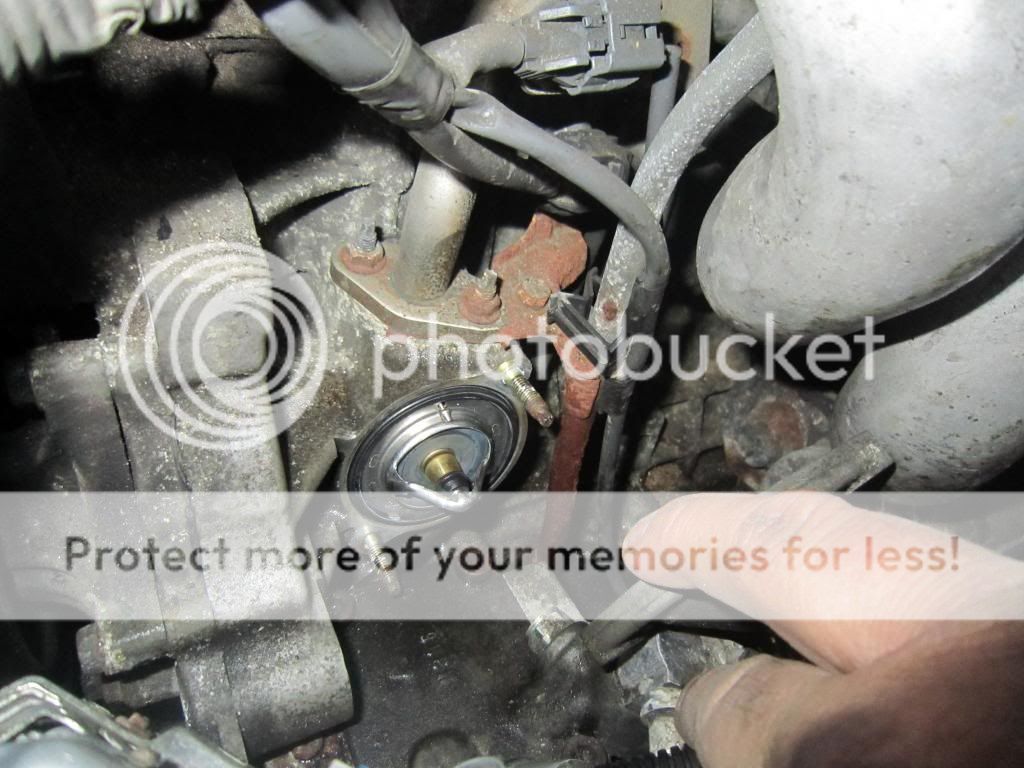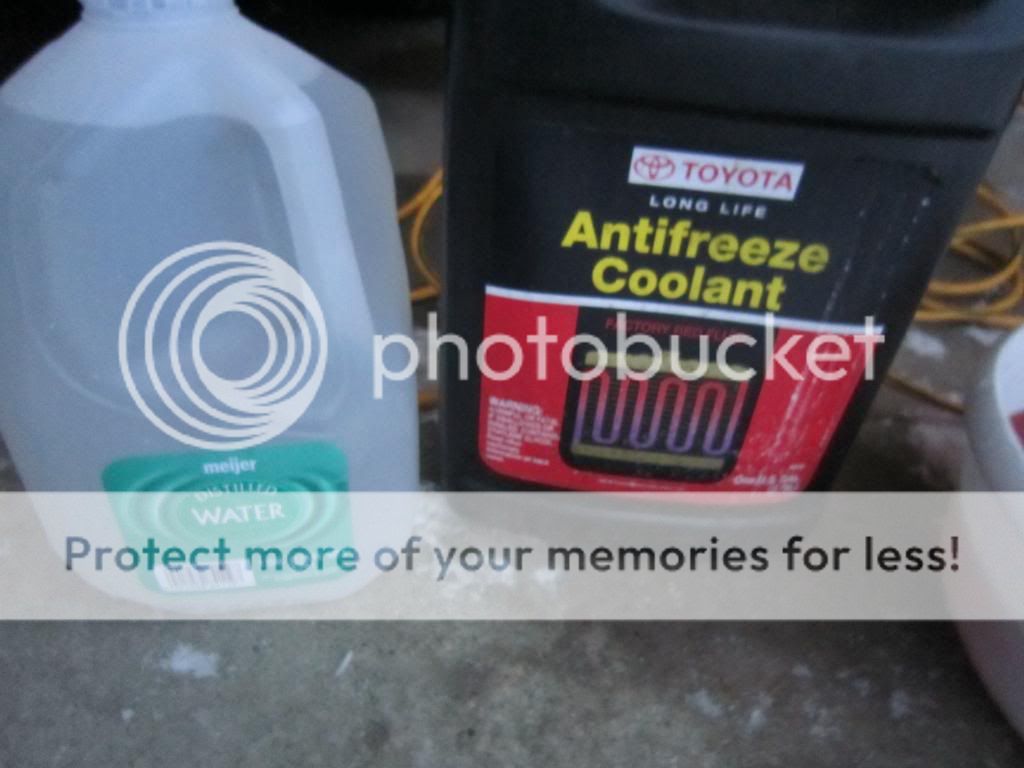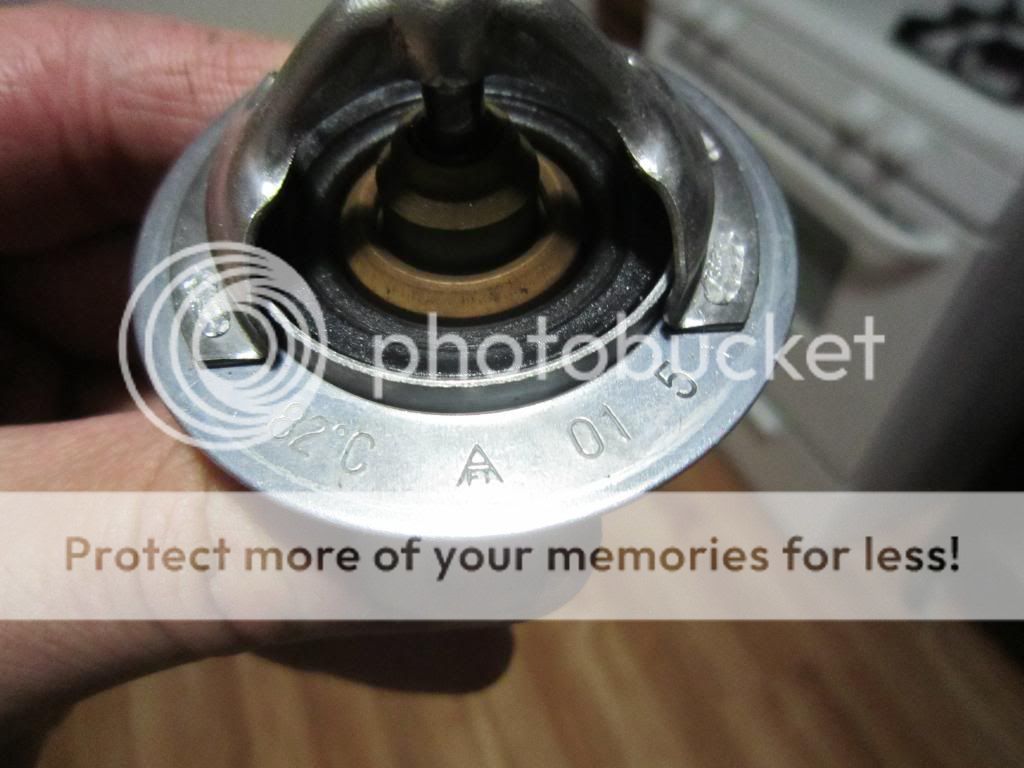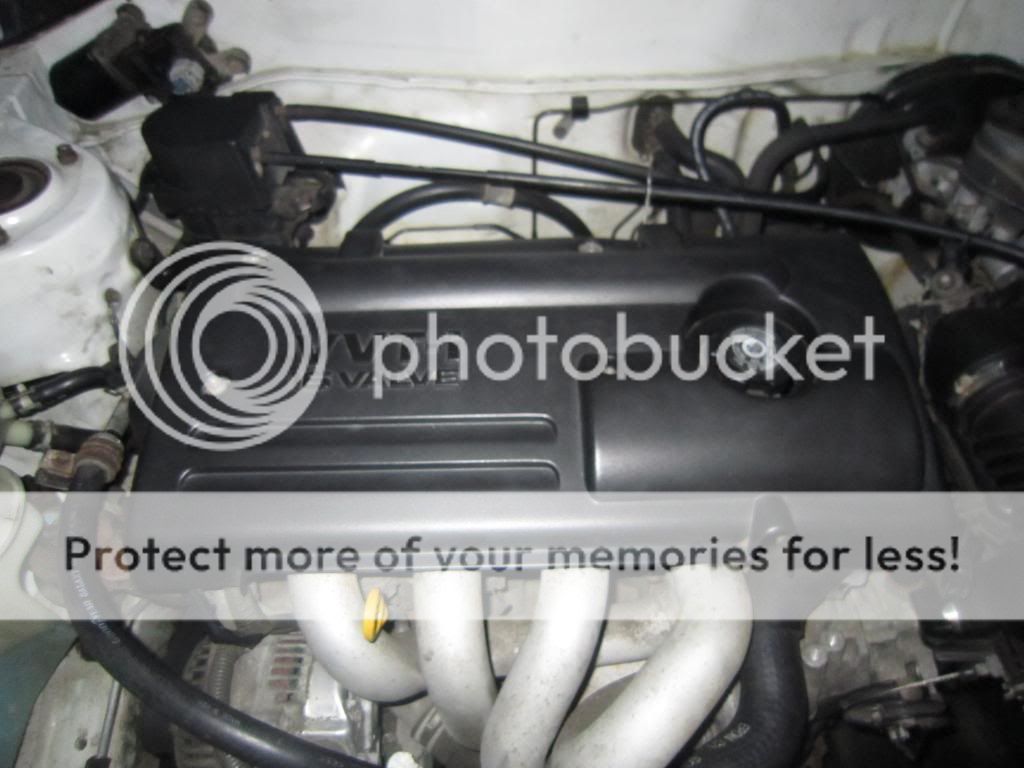My Corolla got a Christmas gift today: new thermostat. Below are photos of the step-by-step process.
Perform this action when engine is completely cool
First, if you want to reclaim the coolant in the system and want to save a mess of coolant flowing out when removing the thermostat housing and thermostat, remove the radiator cap and remove the radiator drain petcock. You can use a makeshift "baffle" to channel the coolant into the basin.
When no more coolant leaves the radiator, move the basin to an area in the garage where debris will not fall into it. Re-install radiator drain petcock. You can leave the radiator cap removed.
Now you have to loosen serpentine belt tension. I used a 17mm socket on the bottom bolt to loosen it (not take it all the way off). Then, used a breaker bar with a 19mm socket for the bolt that you pull forward to loosen belt enough to take it off the alternator.
Disconnected connection at negative terminal. You may not have to do this if you don't plan on unplugging alternator's electrical connector.
Lift the alternator out. The thermostat housing is exposed has two small 10mm nuts; be careful not to drop them upon removal.
Installed new gasket from Beck/Arnley on the new OEM thermostat.
Used a Brillo pad to remove debris and build-up in the area where old thermostat was.
Installed thermostat with jiggle valve at the TOP. This is important.
Make sure thermostat is snug, then re-install the two thermostat housing mounting nuts. Tighten each side equally (two turns on one, then two turns on the other) to help prevent leaks.
Re-install alternator and re-plug electrical connector to it (if necessary)
Use breaker bar with 19mm socket to bring belt back to alternator. Make sure the serpentine belt is correct on each pulley.
Re-tighten the 17mm bolt below the tensioner bolt.
Reconnect negative battery terminal connection if necessary
Remove radiator cap and gradually pour in a 50/50 mixture of Toyota red antifreeze with distilled water. I use 60/40. You can also use Toyota's pink antifreeze/coolant that is pre-mixed. If you reclaimed coolant prior to removing the serpentine belt, use that mixture to pour into the radiator.
When no more coolant can be fed into the radiator, start the engine (can leave cap off radiator) and let it idle a couple minutes. Again, add more coolant to the radiator until system doesn't accept any more.
With engine idling, turn the heater on with fan setting at high. I put my system on recirculate.
Check for leaks at the thermostat housing.
See if engine will accept any more coolant through the radiator. If yes, add a little. If not, leave car idling with radiator cap off so the engine can burp air out of the cooling system.
Re-install radiator cap. Shut off engine.
Install a coolant mixture into the recovery tank. (after a drive, the car will warm up fully, circulate coolant, bleed out any air) After a highway drive and the engine cools, the cooling system will draw any more needed coolant into the radiator via coolant in the recovery tank.
Check for leaks again at the thermostat housing
Before your second drive, check coolant recovery tank level and add coolant if necessary.
My Corolla pours out more hot air now, not just warm. Idle has improved. Fuel efficiency should improve. Doesn't take as long for temperature gauge needle to get to the half-way point in 20-degree temperatures.

